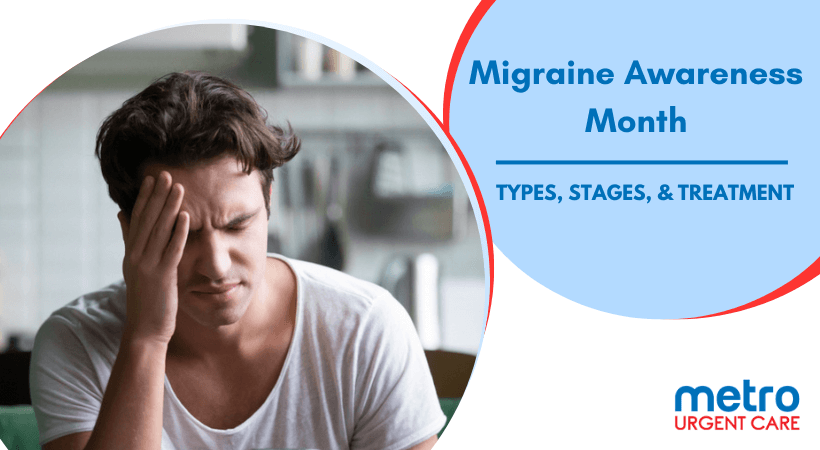


A headache is a common medical condition characterized by severe pain or discomfort in your head or neck area. A migraine is a specific type of headache typically more severe and debilitating than a regular headache. It is a disorder affecting millions worldwide and defying simple explanations. A migraine extends beyond a typical headache and encompasses a neurological condition that induces pain that may sometimes leave individuals in bed for days. According to estimates, 39 million Americans suffer from migraines. Inadequate awareness and treatment of migraine headaches have increased the number of cases and caused various challenges.
June is national migraine awareness month, a time to spread awareness about the causes, symptoms, prevention, and treatment options. This blog is to help you understand the fundamentals of migraine and migraine awareness month.
Migraine, a complex neurological condition, manifests in various types, each with distinct symptoms. Let's explore some of the common migraine types and their associated symptoms
This kind is the most common. The signs comprise nausea, sensitivity to light (photophobia), effects, sound, and mild pulsing headaches.
Aura affects around one-fourth of migraine patients. Common symptoms include blind patches, zigzag lines, and other visual disturbances.
Chronic migraines happen when a person has at least eight migraine days out of at least 15 headache days each month. The symptoms are comparable to migraines without an aura but have major complications.
This uncommon kind causes brief weakness on either side of the body before or during the headache. Speaking difficulties, sensory abnormalities, and visual problems are possible additional symptoms.
These migraines primarily affect balance and coordination. Symptoms include dizziness, vertigo (a spinning sensation), problems with balance, and instability. Headaches may or may not be present.
Common causes include—
Migraines can be brought on by changes in estrogen levels, which women frequently encounter during menstruation, pregnancy, or menopause.
Bright lights, strong scents, intrusive sounds, and specific weather changes can cause migraine headaches.
Physical effort, stress, worry, and all these things can cause migraine attacks.
In vulnerable people, inadequate and excessive sleep can cause headaches.
Seasoned cheeses, chocolate, caffeine, alcohol, and processed meals containing additives like monosodium glutamate (MSG) foods and beverages have been connected to migraines.
The four migraine stages are—
This early phase starts hours or days before the headache and is a warning indication. It may show up as mood swings, cravings for certain foods, stiff neck, exhaustion, or frequent urination.
Auras include fleeting neurological symptoms such as speech difficulties, tingling or numbness in the face or limbs, and vision problems.
The most well-known and unpleasant phase of migraine. Although it can affect both sides, it is marked by throbbing or pulsing head discomfort on one side of the head.
This last phase, known as the "migraine hangover," begins after the headache fades. Individuals may experience fatigue, mood changes, and cognitive difficulties.
Risk factors for migraines include—
Healthcare providers may recommend the following treatments for migraine headaches–
Various prescription-based medications help individuals address migration by enhancing serotonin levels in the brain.
Fixing a routine, getting adequate sleep, eating good meals, investing in health-boosting endeavors, and other lifestyle changes can help naturally prevent migraines.
Pleasurable activities like enjoying music, caressing your pet, or reading your favorite book can significantly relieve stress and help address migraines.
Adopting a healthy, fresh, and colorful diet consisting of fruits, whole grains, and vegetables can help diminish the frequency of migraine attacks and keeps the triggers in check.
Seek prompt medical care to rule out any underlying illnesses and obtain the proper therapy if you encounter severe or incapacitating migraines, abrupt onset headaches, changes in headache patterns, or supplementary neurological symptoms.
Don't let pain control your life. Find lasting relief at Metro Urgent Care in Chicago, IL. Visit us today for expert migraine treatment. Get informed, get treated, and get back to living pain-free! Take the first step to relief and experience personalized treatment in Chicago with our experienced providers.